Before we go over the plants that you can safely have around your bearded dragon, let’s first cover whether or not live plants are worth putting in your pet’s enclosure.
The benefits of adding live plants to your bearded dragon’s home are plentiful. The plants add extra nutrition and variety in terms of food sources. They add enrichment to your pet’s day, as it makes them feel more at home like their wild relatives. Your pet may also enjoy perching on the limbs of plants and having hiding spots within their leaves. In general, there are very few reasons not to add plants to the enclosure.
The only reason that plants would be a risky choice for your bearded dragon’s home is if you include the wrong plants. Bearded dragons are curious animals, and they’ll often take a bite out of any green thing. Luckily, we’re here to show you 13 safe plants that are perfect in your bearded dragon’s enclosure.
How to Use Live Plants In Your Bearded Dragon’s Home

Live plants add enrichment to your bearded dragon’s day and make them feel more at home.
©iStock.com/Paul Oborowski
You can grow plants directly in the substrate of your bearded dragon’s enclosure. However, whether or not the plants will grow well will depend on a few things. First, it will depend on what kind of substrate you’re using for the enclosure. While some owners swear by sand, others won’t let a grain of it touch their enclosures. However, most bearded dragon owners will use some sand or soils, while refusing many other types. If your plant requires a different soil than that of your enclosure, you can place the plant in a small terracotta pot. The pot will protect the plant’s soil and the substrate from mixing.
It’s generally agreed upon that you should not use calcium or vitamin sand in your pet’s enclosure. However, there are many types of substrates sold in stores that mimic the natural habitat of Australia. Any of these should work in your bearded dragon’s enclosure, and you can put most species of plants directly into the sand or soil.
Keep in mind when purchasing plants that some nurseries use chemicals and pesticides. You’ll want to avoid plants that have either of these sprayed on them to protect your pet.
Prickly Pear Cactus
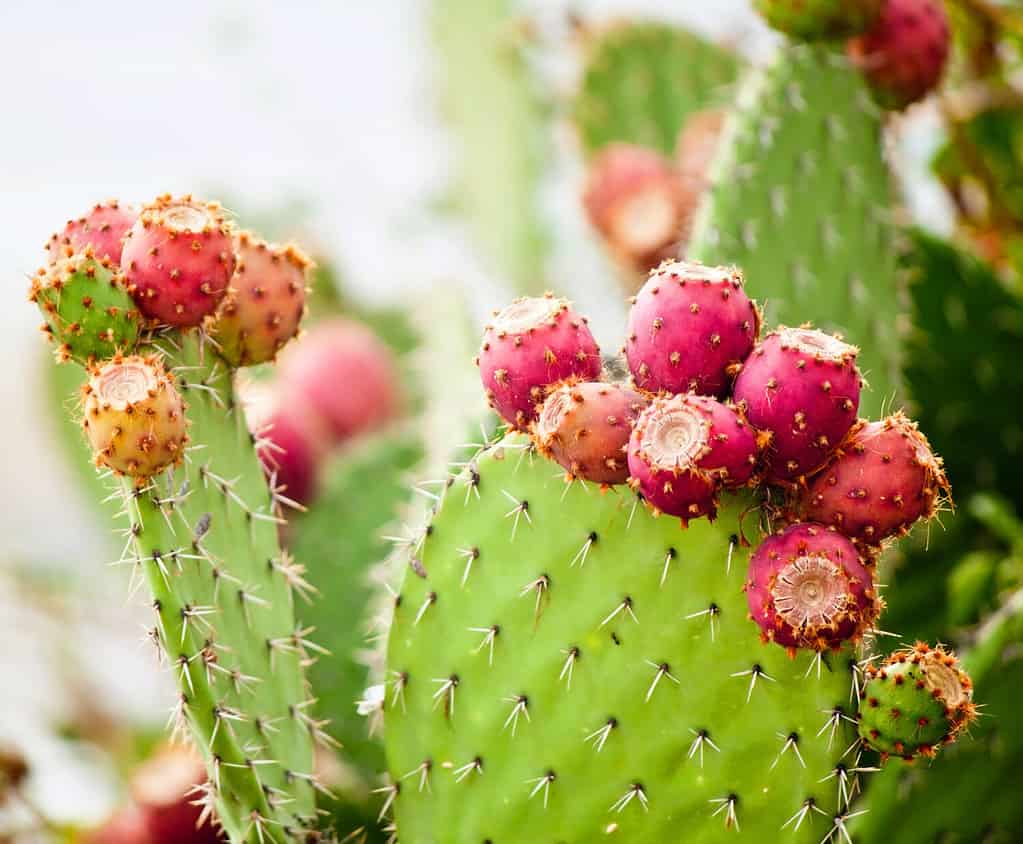
Prickly pears are delicious treats for your bearded dragon, but make sure to pick the spineless variety!
©fischers/Shutterstock.com
When it comes to choosing plants, the prickly pear cactus should be at the top of your list. That’s because it’s one of the species that grow naturally in the bearded dragon’s native environment. Prickly pears are high in moisture, calcium, and other minerals, so they make a great snack for your pet.
Of course, prickly pears are a type of cactus, so most of them have sharp thorns. To avoid sticking your bearded dragon, purchase a spineless variety.
Mint
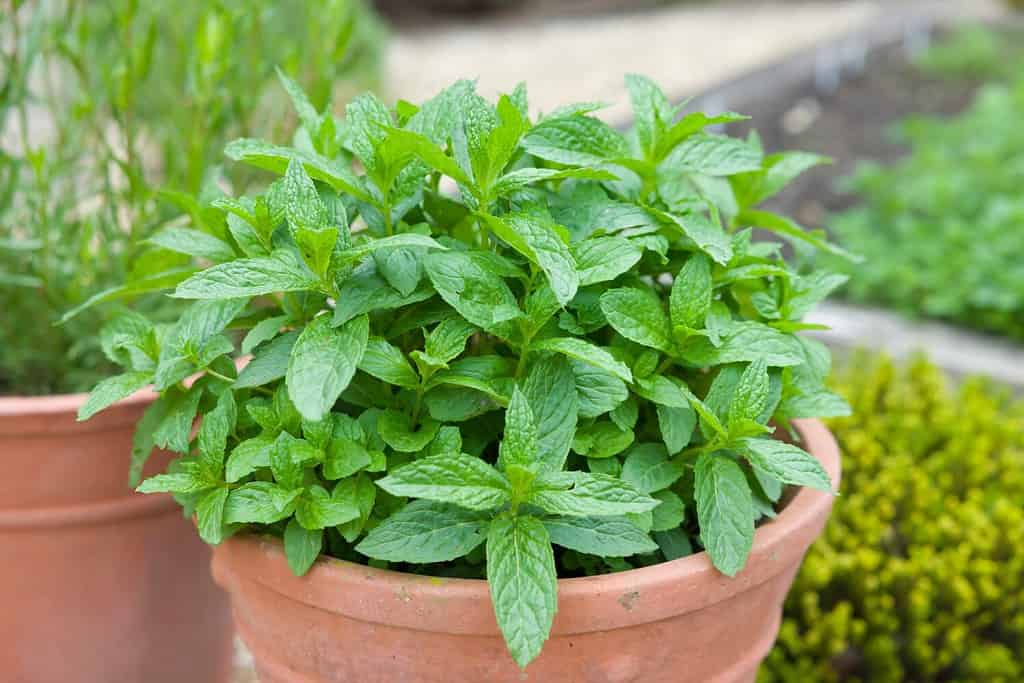
Grow mint in small terracotta pots or directly in your pet’s enclosure.
©Paul Maguire/Shutterstock.com
Mint is another great choice for your pet’s enclosure. The plant shouldn’t be fed as a staple food because it contains menthol and has a high water content. Mint is also full of elements like calcium and phosphorus, which can become dangerous for your pet in large quantities. However, snacking on mint is perfectly safe for your bearded dragon.
Oregano
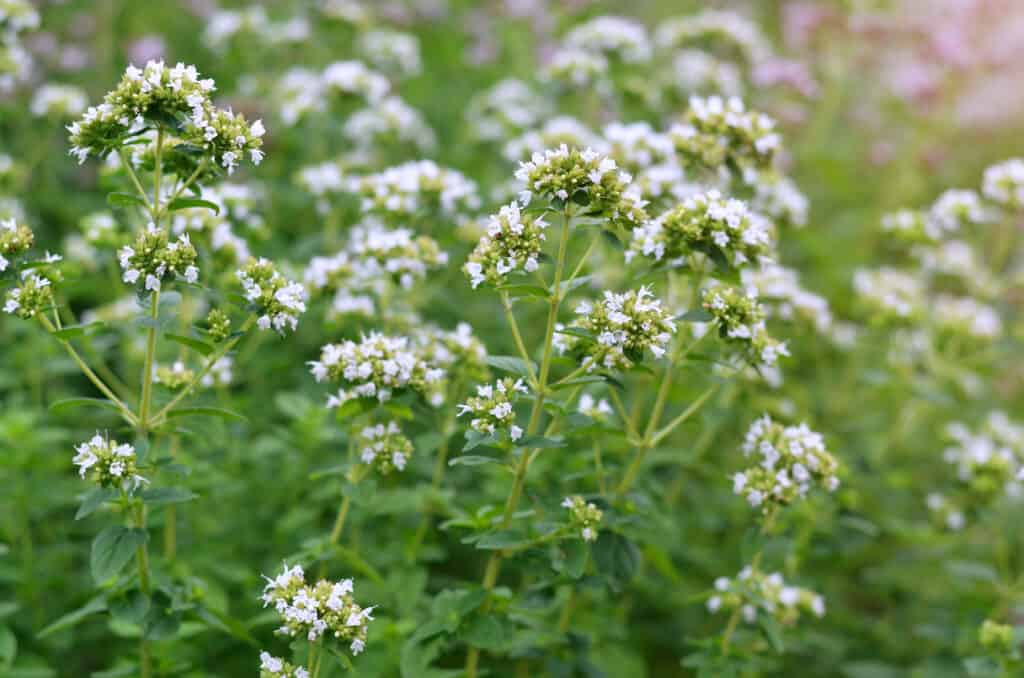
Oregano is a beautiful choice because it produces white blooms that add aesthetic value.
©Julitt/Shutterstock.com
Like mint, oregano is another herb that is safe for your bearded dragon to consume in small quantities. It’s actually a part of the mint family, so treat it similarly to other mint plants. Like mint, oregano has a strong scent and sharp flavor. In terms of benefits, oregano may help with your pets’ digestion because the herb can stimulate digestive enzymes.
Haworthia

While it doesn’t look tasty to you or me, haworthia is a favored snack of bearded dragons!
©Sunflow Studio/Shutterstock.com
Take one look at this small succulent and you wouldn’t call it tasty-looking, but bearded dragons seem to love it! These plants are extremely hardy, so they can tolerate nearly any condition, including bites from your pet. Since haworthia comes from the deserts of South Africa, it’s a plant that your pet would have naturally encountered in the wild. Therefore, it might make your bearded dragon feel more at home!
Basil
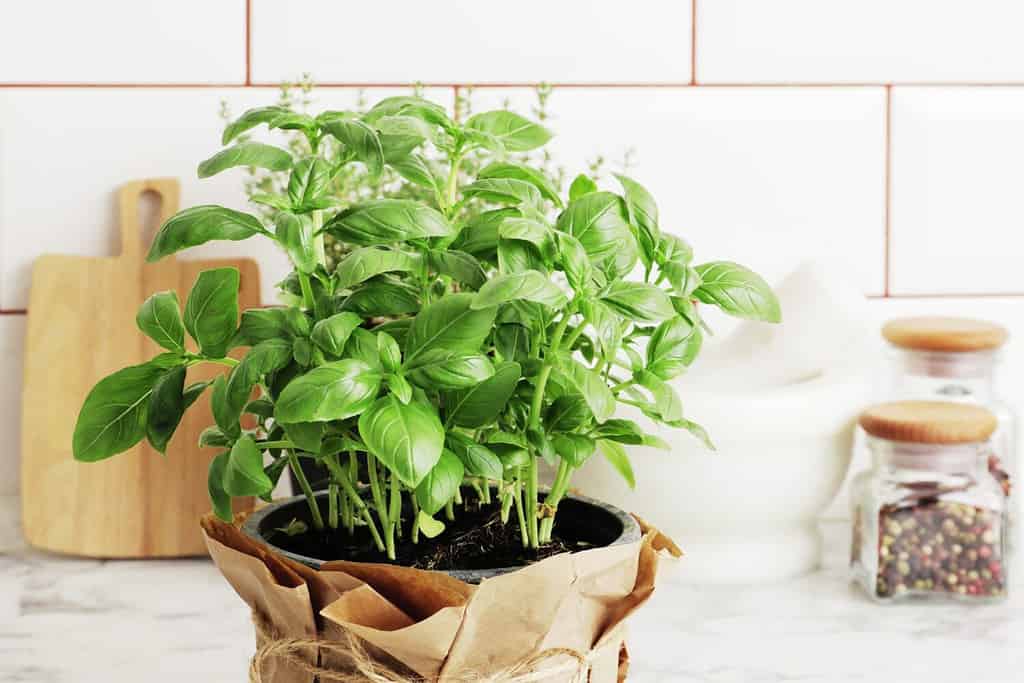
While basil needs a lot of light, it will grow fairly large.
©PandaStudio/Shutterstock.com
Basil is a great herb to use in your bearded dragon’s enclosure because it has a strong, lovely scent. The herb will keep your home smelling nice around your pets’ space, which is sometimes hard to do! Plant basil freely throughout your bearded dragon’s home, and make sure it has plenty of light to grow.
Aloe Vera
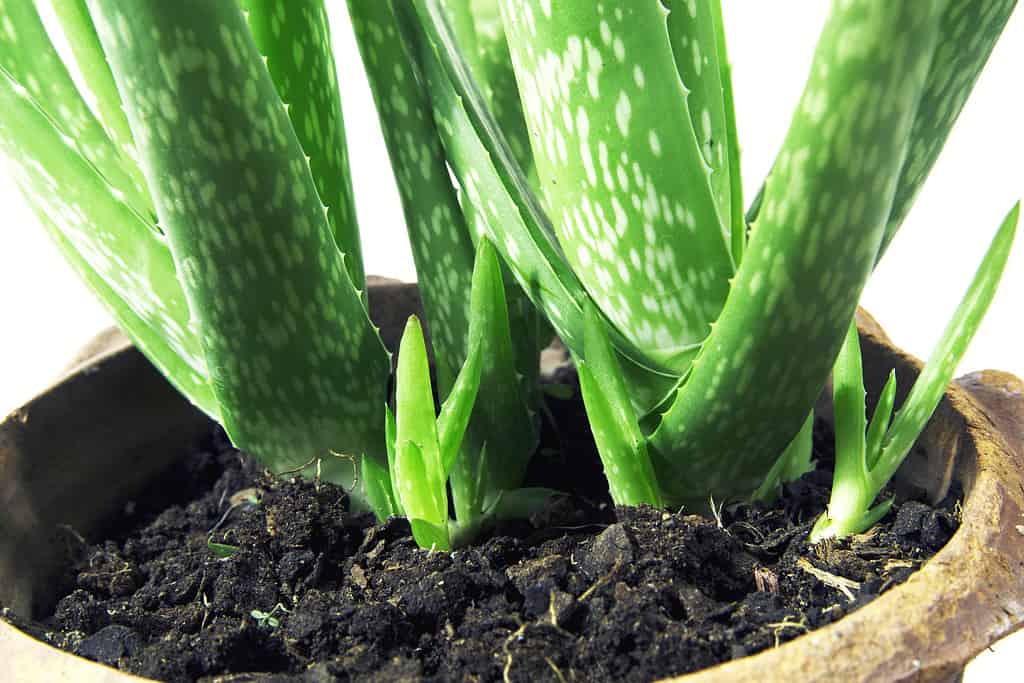
If you notice that your bearded dragon starts getting diarrhea, try removing the aloe vera.
©S_Sukporn/Shutterstock.com
Aloe vera is a controversial choice for bearded dragon’s homes. On one hand, it looks great in their cage and is completely non-toxic, which is good. On the other hand, aloe vera contains a lot of water and can cause diarrhea in large quantities. Because there are so many types and colors of aloe vera, many owners love the plant for its aesthetic qualities.
Lemon Balm
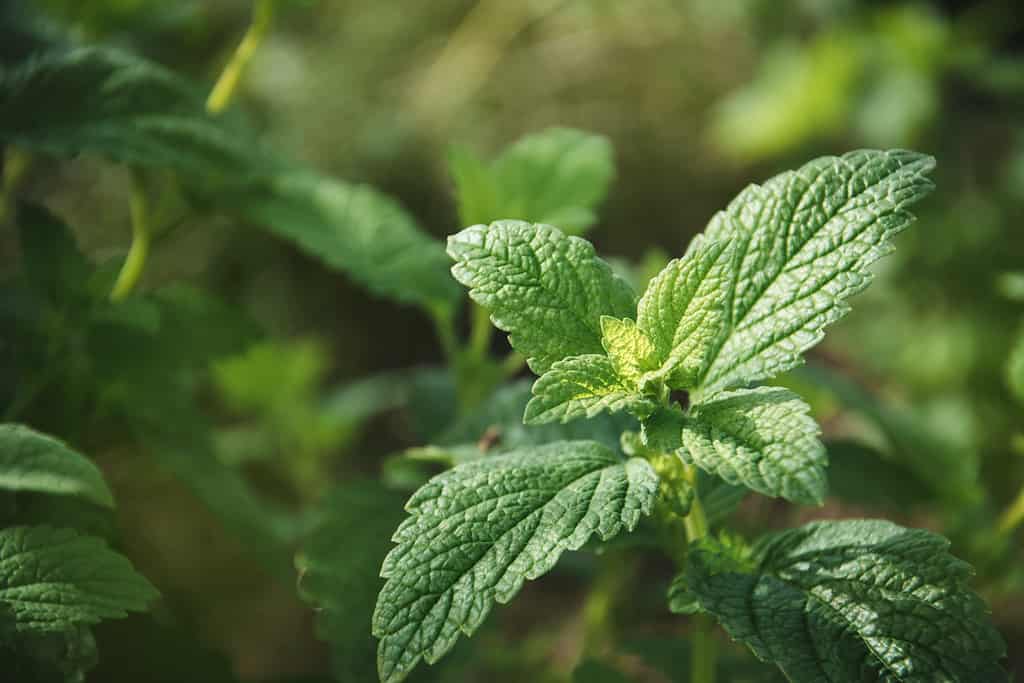
The light, citrusy flavor of lemon balm makes it a great snack for bearded dragons.
©OliaMogdaleva/iStock / Getty Images Plus via Getty Images
Lemon balm is a small, sweet-smelling herb that has a citrusy scent. It’s edible for bearded dragons but like many of the other plants, should not be eaten in large quantities. Keep in mind that lemon balm is a fast-growing and fast-spreading species. It will certainly make your terrarium smell great, but keep a watch on it so that it doesn’t spread too much.
Nasturtium
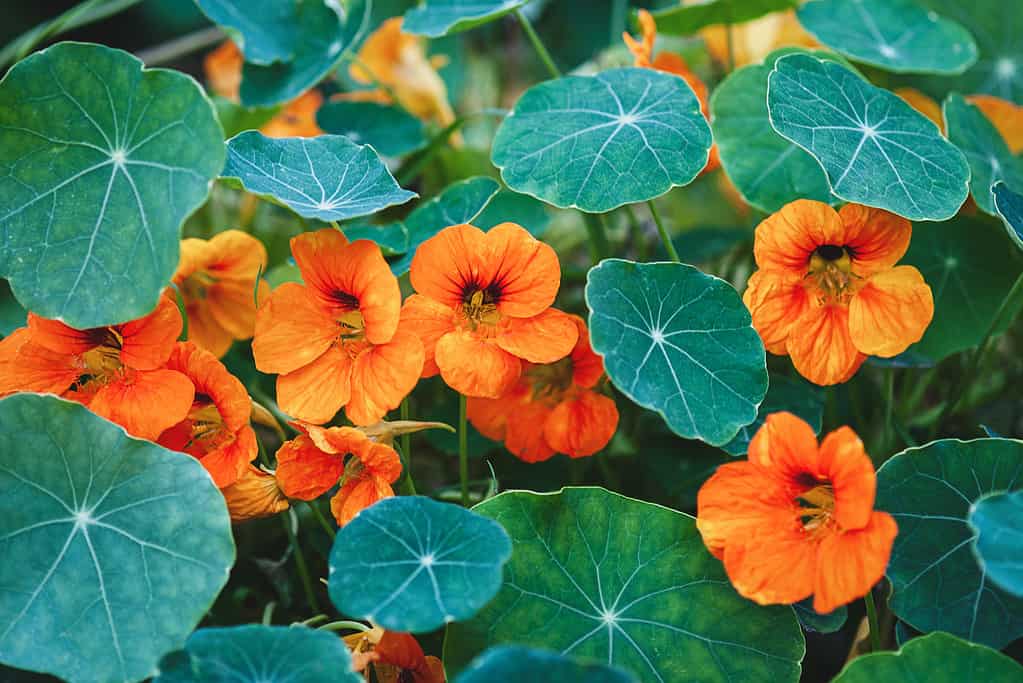
All parts of the nasturtium, except the roots, are safe for your bearded dragon to eat.
©Nadya So/iStock / Getty Images Plus via Getty Images
Nasturtium is one of our favorites for bearded dragon enclosures because it’s one of the few flowering plants that grows well. Your pet can consume every part of this plant, including its flowers, which make a great treat. Nasturtium plants have long tendrils that grow quickly, so keep an eye on the plants to keep them from getting out of hand.
Rosemary

Rosemary blossoms can add beauty to your pet’s enclosure as long as rosemary is in proper lighting.
©Maren Winter/Shutterstock.com
Another strong-smelling herb that goes well in your pet’s enclosure is rosemary. It’s safe for your bearded dragon to consume and can help protect their immune system. Rosemary can upset your pet’s stomach in large quantities, so keep an eye on how much they’re munching. Our favorite part about rosemary is its lovely scent, which is noticeable from across the room.
Echeveria
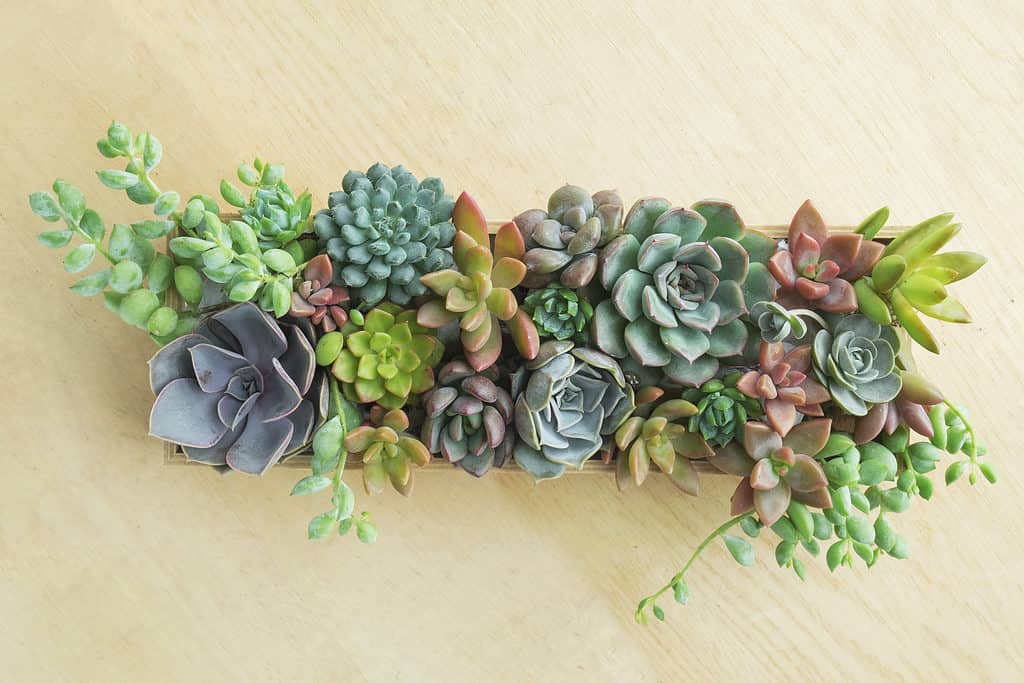
With so many varieties to choose from, you can pick echeveria to fit any color scheme.
©panattar/Shutterstock.com
Echeveria succulents are some of the most common types that you’ll see in stores. They’re small, easy to grow, and well-loved by many. Echeveria plants come in blues, greens, and even reds, leading many to believe that dyes are used. However, most echeveria plants do not contain dyes and are perfectly safe for consumption. With over 150 varieties to choose from, echeveria provides tons of customization options for your pet’s enclosure.
Kale

Kale isn’t the easiest to grow inside because it requires nearly full sun.
©Thirawatana Phaisalratana/iStock / Getty Images Plus via Getty Images
It can be tricky to grow kale indoors, but if you give it enough heat and light, you’ll have plenty of greens for your pet to eat. The leaves contain many vitamins and minerals, making them one of the best foods for your pet. Out of all of the plants on our list, your bearded dragon will benefit the most from consuming kale. The only concern when it comes to kale is that it contains goitrogens, which can cause thyroid issues in large quantities.
Hibiscus
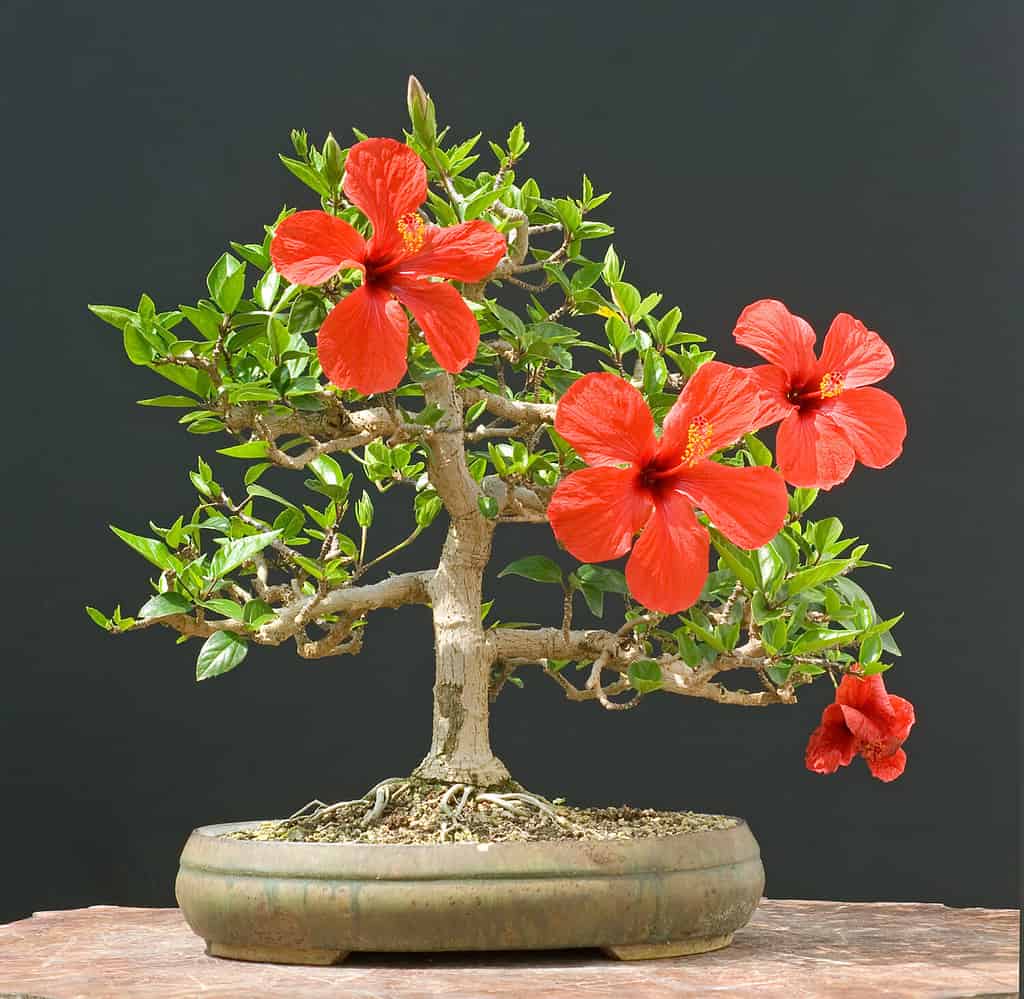
While hibiscus plants have the ability to grow very large, you can also keep them as bonsais.
©Walter Pall/Shutterstock.com
Hibiscus are safe, edible plants in the same family as okra. They grow best in large enclosures because hibiscus are naturally large plants. You’ll find that your bearded dragon enjoys munching on the flowers, which tastes tropical and sweet. Take care to plant hibiscus in a place that sees less traffic. Its leaves and branches are easily crushed, which damages the plant.
Lettuce

Lettuce adds a pop of bright green to your pet’s enclosure.
©Victoria P./Shutterstock.com
Bearded dragons must eat a variety of greens, and they seem to really enjoy lettuce. Like kale, your pet can only eat so much of it before experiencing some ill effects. Lettuce has a lot of water and not many nutrients, a combination which can cause bloat. While lettuce shouldn’t be a staple food, it’s a great snack for your grazing bearded dragon. It’ll also add color and nature to its environment and stimulate your pet.
Summary of Safe Plants Perfect for Bearded Dragons
| Plant Name | |
|---|---|
| #1 | Prickly Pear Cactus |
| #2 | Mint |
| #3 | Oregano |
| #4 | Haworthia |
| #5 | Basil |
| #6 | Aloe Vera |
| #7 | Lemon Balm |
| #8 | Nasturtium |
| #9 | Rosemary |
| #10 | Echeveria |
| #11 | Kale |
| #12 | Hibiscus |
| #13 | Lettuce |
The photo featured at the top of this post is © Shinedawn/iStock / Getty Images Plus via Getty Images
Thank you for reading! Have some feedback for us? Contact the AZ Animals editorial team.







